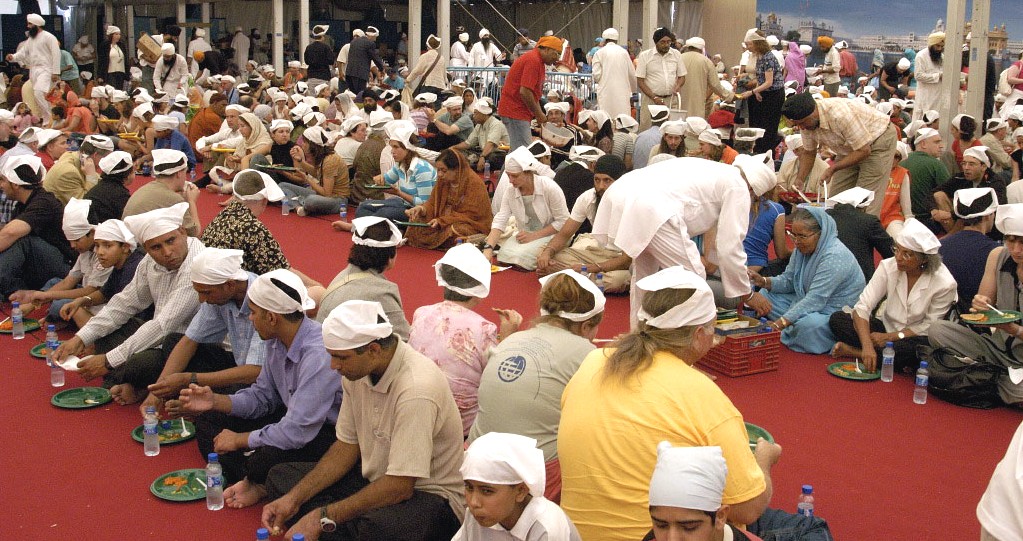
Langar stands out as a symbol of equality, community, and compassion. Langar symbolizes Sikh values of selfless service, humility;offering nourishing meals as a symbol of equality and care .
Origin of Langar
The roots of Langar go back to the time of Guru Nanak Dev Ji, the founder of Sikhism in the 15th century. Guru Nanak emphasized the importance of equality and the fight against caste discrimination. To implement this principle, he created the concept of Langar, where people from all backgrounds, regardless of caste, creed or social status, sat together and shared a meal as equals.
Spiritual Significance
Langar serves both practical and spiritual purposes in the Sikh community.
On a practical level, this ensures that no one in the community goes hungry. It is a way to satisfy the basic human need for food and nutrition. On a spiritual level, Langar embodies Sikh values such as selfless service (seva) and humility (nimrata). Volunteers, known as sevadars, prepare, serve and clean up after the meal, with an emphasis of giving without expecting anything.
The langar is essentially an expression of the Sikh belief in the equality of all beings. In a world that often divides people based on social status, wealth or background, Langar offers a stark contrast. Here everyone, despite their worldly differences, sits together on the floor and enjoys a simple meal as equals. It is a profound practice that is a living example of human unity.
The Langar Hall
A Gurudwara, a Sikh place of worship, usually contains a Langar hall. Langar is prepared and served in this hall.
The atmosphere is relaxed and inclusive, and people from all walks of life come together. The langar is usually vegetarian to ensure that all dietary restrictions of visitors are met.
Practice of Equality
The langar is essentially an expression of the Sikh belief in the equality of all beings. In a world that often divides people based on social status, wealth or background, Langar is a contrast. Here everyone, despite their worldly differences, sits together on the floor and enjoys a simple meal as equals.
It is a profound practice that is basically a living example of human unity.Langar is more than just sharing a meal. It's a practical display of equality. When people sit together on the floor, they set aside social status, declaring that all are equal in God's eyes, regardless of earthly differences.
Community & Oneness
Langar extends its embrace to the wider community. Many Sikh Gurdwaras open their Langar halls to the public and welcome people from all walks of life. This practice promotes a sense of togetherness and inclusion where people from different backgrounds can come together in a spirit of unity.
Langar in Times of Need
Langar acquires greater importance in times of crisis. Gurudwaras often offer Langar during natural disasters, pandemics or a situation where people may suffer. This practice represents the Sikh commitment to serving humanity and providing comfort and sustenance when it is most needed.
Conclusion
In a world often divided by differences, Langar is a great example of what can be achieved when humanity comes together to share a meal and make each other happy. It is a proof to the continuing relevance of Guru Nanak's teachings and the universal appeal of selfless service and involvement. It surpasses religious boundaries and cultural differences and highlights the power of unity, compassion and equality.
Note- We have made every effort to ensure the accuracy and reliability of the information provided. However, this content is intended for informational purposes only and reflects historical and cultural perspectives. DVN does not assume responsibility for any disputes or actions that may arise from the use of this content. If you believe any information is incorrect or misleading, please contact us.